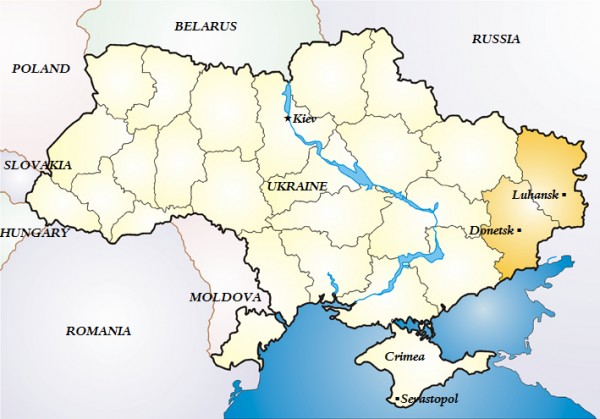Guest Post: Unfreezing the Ukraine Conflict

More on:
Andrew Kenealy is an intern in the Center for Preventive Action at the Council on Foreign Relations
For some in the Donbas region of eastern Ukraine, the ongoing low-level skirmish between Ukrainian and Russian/separatist forces has faded into the background of daily life. The nightly shelling barely affects the normal existence of Ukrainians: grocers have enough to sell in shops, public gathering spots are crowded on warm days, and reservations are still difficult to book at the best restaurants on the weekends. But despite the perception of calm, the death toll from the conflict is unsettling. After eighteen months of fighting, nearly eight thousand lives have been lost, another thirty thousand people have been wounded, and more than 1.5 million are internally displaced.
Beyond the casualties, Russia’s annexation of Crimea in March 2014 and its enduring military intervention in eastern Ukraine have plunged U.S.-Russia relations to their lowest level of trust since the Cold War. Although the Minsk II cease-fire agreement was signed in February 2015, major fighting was not suspended until September and the conflict has reached an impasse. Both Russia and Ukraine repeatedly pledged to implement the peace accords in the subsequent Paris talks that took place on October 2, yet there are continued reports of fire exchanged between the warring sides in Donbas.
A new Center for Preventive Action Contingency Planning Memorandum Update examines rising escalation and spillover concerns about the conflict and lays out a durable policy agenda for the United States. In “Crisis Over Ukraine,” Steven Pifer, senior fellow at the Brookings Institution and former U.S. ambassador to Ukraine, argues that a frozen conflict would pose substantial risks for U.S. interests.

Some have argued (for example, John Mearsheimer) that the United States and its allies should do nothing (e.g. abandon plans to support a pro-West government in Ukraine and rule out NATO’s regional expansion). The argument for a minimal U.S. role—which presupposes NATO’s eastward expansion, rather than initial Russia-sponsored aggression, as prompting the crisis—relies on the assumption that Russia will act militarily in Ukraine and Eastern Europe only if provoked. This is a risky assumption, since Vladimir Putin (or any head of state) can always reassess their strategic situation and adjust their foreign policy (as Putin has done in Syria). Without U.S. and European Union support for Ukraine and other Eastern European nations, an opportunistic Putin could freely determine—without an overt Western provocation—that Russia can do whatever it wants in Eastern Europe with little cost.
Given the risk of Moscow further expanding its influence outside of Russian borders, Pifer promotes a more active U.S. foreign policy approach in Ukraine and Eastern Europe. He advocates constraining and reducing the Kremlin’s ability to interfere in the region through a combination of Western assistance to Ukraine and Eastern European countries, and additional sanctions on Russia. This would increase the cost of further Russian territorial expansion, help stabilize Ukraine, and reassure other nervous Eastern European nations. Other specific recommendations include:
• Press the Ukrainian government to avoid political infighting, move faster on reform, and implement Minsk II
• Continue close coordination with European Union nations on how to financially support Ukraine (with an additional $5 to $7 billion in financial aid) and maintain economic sanctions on Russia
• Work with NATO to bolster conventional defense capabilities—such as a larger rotational presence of alliance ground forces—n the Baltics and Central Europe and provide greater military assistance to Ukraine
• Work with Germany and other allies to reestablish an accord between the West and Russia on the security rules for Europe, particularly with Germany once it assumes chairmanship of the Organization for Security and Cooperation in Europe in 2016
• Stress the importance of restoring a broader dialogue between the United States/West and Russia to facilitate a peaceful settlement of the crisis.
Read Steven Pifer’s Contingency Planning Memorandum Update, “Crisis Over Ukraine,” for specifics on how the United States can curb Russian influence in Eastern Europe and promote a productive dialogue with Moscow.
More on:
 Online Store
Online Store
